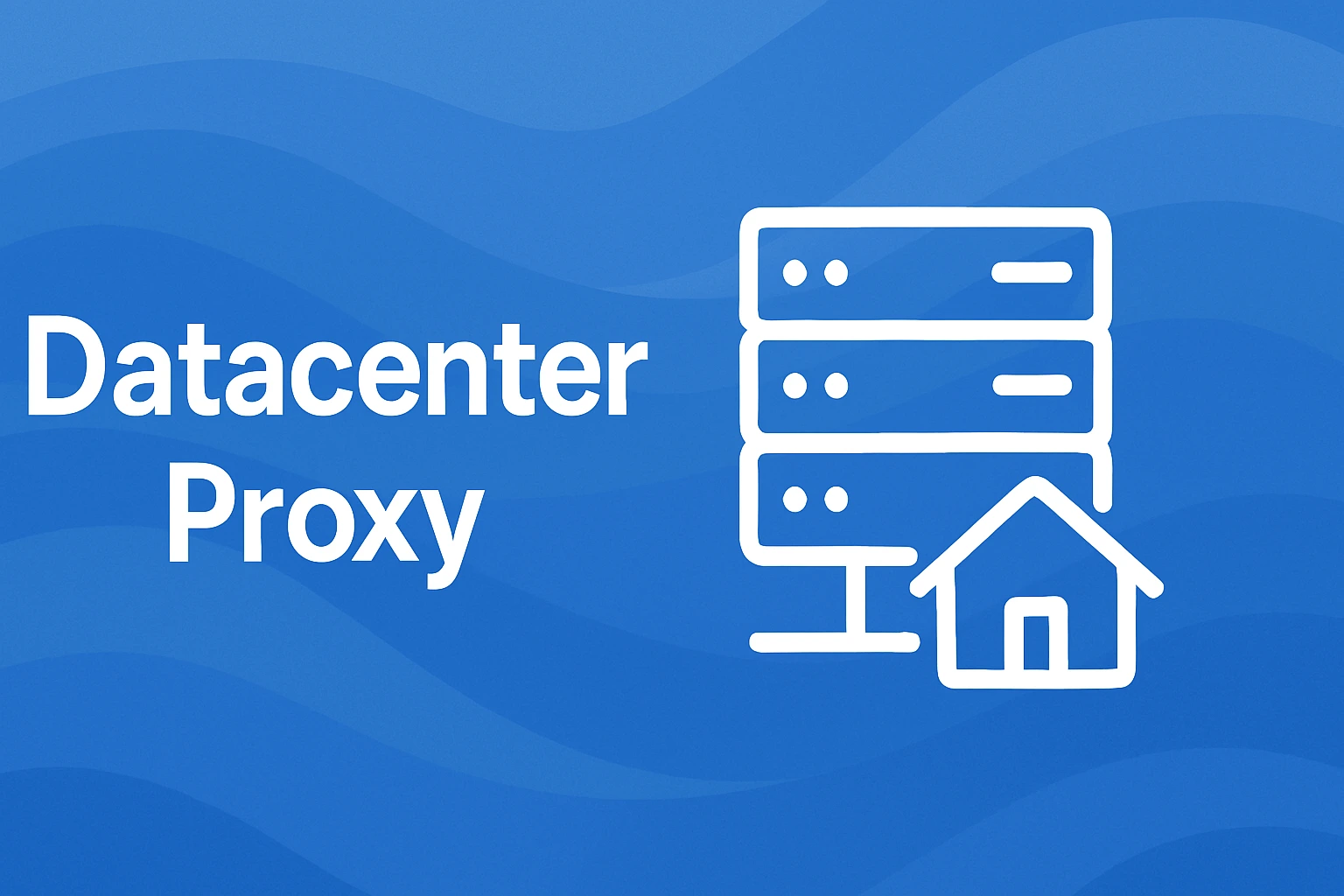Each year, the number of tasks requiring anonymous or distributed internet access is growing rapidly. Whether it’s website scraping, price analysis, ad verification, or automation – all of these require stable and scalable solutions. In such cases, a good option is to use datacenter proxies with reliable IP addresses that are not tied to real users.
These proxy servers allow you to perform thousands of requests per minute without losing speed and without being tied to a specific geolocation. They are cheaper and more efficient than other types of proxies, which is why they are widely used for large-scale digital tasks.
How Datacenter Proxies Work
To understand this, you need to consider several points:
IP Address Source
The main difference of datacenter proxies lies in their origin. They obtain IP addresses directly from data centers (DCs), rather than internet service providers, as is the case with residential or mobile proxies.
This allows them to ensure:
- high IP density within a single range;
- full control over infrastructure;
- no dependency on real devices.
Technical Features
Datacenter proxies operate via powerful servers capable of handling large volumes of traffic.
Their main characteristics include:
- support for HTTP, HTTPS, and SOCKS5;
- speeds up to 1 Gbps;
- mass connection – from dozens to thousands of IPs;
- built-in IP rotation system (in some cases);
- scalable flexibility for tasks of any volume.
All of these features make them ideal for automated processes and multi-threaded data processing.
Types of Datacenter Proxies
We can distinguish several categories based on usage models:
- Public (shared) – free but unstable, with a high risk of being blocked.
- Semi-dedicated– used by a limited number of clients (usually 2–3).
- Dedicated – belong to a single user only, providing maximum reliability and control.
- Rotating – the IP address changes with each new request or at set intervals.
Advantages of Datacenter Proxies
Server-based proxies are popular due to the following benefits:
- High speed – connections via data centers ensure minimal latency.
- Low cost – the most affordable type of proxy on the market.
- Easy scalability – quickly increase the number of IPs as the project grows.
- Reliability – fewer failures and stable operation around the clock.
- Flexible configuration – easily integrates into scripts, programs, and bots.
Disadvantages of Datacenter Proxies
Despite their many advantages, this type of proxy has certain limitations:
- Relatively easy to identify – many websites can detect datacenter IPs as suspicious traffic.
- High risk of blocks – especially during aggressive scraping without rotation or with poor request strategies.
- Lack of geo-anonymity – IPs don’t belong to real users, which can make them unsuitable for tasks requiring a local presence.
Nevertheless, with proper setup and usage, these drawbacks can be minimized and won’t hinder performance.
Comparison with Residential and Mobile Proxies
When choosing a type of proxy, it’s important to understand their key differences. Datacenter proxies stand out for their high speed and stability. They do not depend on real users or telecom operators, as all traffic passes through servers in data centers.
Residential proxies, operating through real devices of home users, appear much more «natural» to websites but are significantly more expensive and slower. They are also harder to scale: obtaining 1,000 residential IPs is more complex and costly than connecting the same number of datacenter IPs.
Mobile proxies use IP addresses assigned by mobile network operators. They offer the highest level of anonymity and are almost never blocked, but they are expensive and usually come with speed and traffic volume limitations.
When to Use Datacenter Proxies
These proxies are optimal for tasks where speed, stability, and availability are the main priorities. They are most commonly used in the following cases:
- Web scraping and parsing – collecting data from websites, price aggregators, catalogs, and platforms.
- Testing and automation – developing and debugging applications, automated page verification.
- Analytics and monitoring – tracking prices, SEO data, and search engine ranking positions.
- Account registration and management – mass creation and maintenance of user accounts.
- Bypassing restrictions – accessing websites that block multiple requests from the same IP.
Where to Buy Datacenter Proxies
Today, there are many providers, but not all of them deliver high quality.
Below are brief descriptions of the Top 5 Datacenter Proxy Providers in 2025:
- Bright Data – over 750,000 IPs, high speed, and transparent pricing. Offers a free trial and an API for integration.
- IPRoyal – affordable prices and a stable network. Over 500,000 IPs in 31+ countries. Simple interface and constant support.
- Webshare – a budget-friendly option for large-scale use. Proxies starting from $6 per month, high speed, supports HTTP and SOCKS.
- Oxylabs – premium proxies from well-known ASNs (e.g., AT&T and Comcast), excellent reputation, and powerful tools.
- Rayobyte – a reliable service with a free trial. Supports up to 1 Gbps and various protocols.
Before purchasing proxies, it’s important to evaluate:
- the tasks you need to solve;
- the importance of speed, geography, and anonymity;
- the required number of IPs;
- pricing flexibility – per IP or per traffic volume;
- whether the necessary protocols (HTTP, HTTPS, SOCKS5) are supported.
Conclusion
Server-based proxies are a powerful tool for anyone working with data, automation, and internet analytics. They are chosen for their high performance, affordability, and ease of connection.
If you’re looking for a stable solution for large-scale tasks, datacenter proxies are an excellent choice. To find the right provider, focus on reliability, support, transparent pricing, and user reviews.

